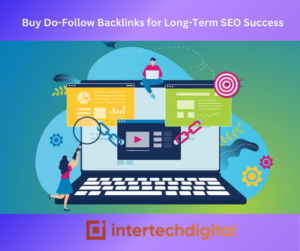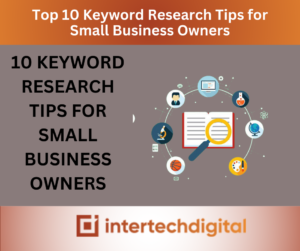
Knowing which KPIs make a difference is crucial to connecting your social media engagement numbers to your KPIs.
Are you sick of hearing the term “vanity metrics”? The ones that ostensibly make you seem good as a social media manager but have no effect on sales or leads.
But here’s the thing: vanity metrics do not exist. All of your likes, impressions and other factors contribute to the bottom line of your business. As a marketer, it’s your job to figure out what you want to get out of your social media presence and devise a plan to get there for each channel. Knowing what you’re looking for is the first step. Knowing what you’re tracking is the first step.
We’re going over the most important social media engagement metrics that affect your total social media performance. We grouped them by metric rather than by channel to keep things easy.
Impressions
The number of organic paid and viral views on your post is referred to as impressions. Remember that repeated statements by the same user are counted in the total number of impressions when calculating your impressions.
Impressions can assist social media marketers in addressing the age-old question, “Is anyone even out there?” The first step in assessing engagement and setting goals is to figure out how many people view your posts. You can also try adjusting the timing of your postings, the content kinds you use, the platforms you use, and other factors to increase your impressions.

Reach
The total number of unique users who saw the post organically, virally, or through sponsored adverts are referred to as reach. Even if someone visits your post multiple times, their visit is only counted once for space. Your follower count is combined with the follower numbers of everyone who has shared the content in question.
Because reach never counts repeat views and cannot be inflated, it helps you receive the most accurate picture of who saw your content. Because it’s one of the denominator variables in the equation, it’s also a vital figure to note when looking at the engagement rates of your posts.
Sprout Social, a social media scheduling platform, has an excellent write-up on its blog that explains the difference between reach and impressions.
Engagement Rate
The number of engagement activities (like clicks, likes, comments, and more) received by post concerning the number of people who viewed it is known as your brand’s average engagement rate. This number, expressed as a percentage, offers you a good idea of how much your audience connects with your articles and allows you to compare your engagement to that of your competitors, regardless of audience size.
While you can determine your engagement rate by dividing it by impressions or reach, we think that dividing it by followers provides the most accurate data for evaluating your rates against others in your field.
Higher engagement rates indicate that your content is engaging with your target audience. This is undoubtedly an essential social media engagement indicator to track.
To calculate your brand’s engagement rate for each post, multiply the total amount of likes, comments, and shares by the number of followers you have. Then divide the total by 100 to get your average engagement rate per post. You might use a program like IntertechDigitalltd to measure all of this for you instead of crunching numbers.
Likes
Likes differ by platform, but they are usually low-effort on-platform responses to content. Likes include Instagram Story emoticons, Instagram or Twitter hearts, and Facebook emotions like wow, caring and laughing. Your audience demonstrates some kind of interest in what you’re posting with a like or even a negative reaction.
Likes provide an actual figure to track, and the emoticon addition allows you to do a sentiment analysis of your audience’s reaction. Favoriting or tweeting is often considered a low-level engagement action, but scrolling to select a reaction emoji adds a new level of effort. For the most accurate picture of engagement, keep track of both the number of likes and the type of like.
Comments
The entire number of organic and paid comments on your post, as well as replies to comments and shares of the post, is referred to as comments. On different platforms, these can take on different forms: a Twitter “reply” qualifies as a comment, for example.
A viewer’s comment on your material has more weight than a like, because writing a response requires more effort than double-tapping and scrolling. Your audience is informing you that your content is thought-provoking based on the content of the comments. They either like or despise it.
Positive or negative feedback on your post indicates to the social media platform that your audience is interested in seeing more of your content. Comments and other forms of extensive participation can help you reach and wow a larger audience.
Shares
When a user shares your content, they are broadcasting it to their social stream, group, or specific persons. Shares not only indicate that your audience is interested in your content, but they also greatly increase the number of people who see it.
When a share, retweet, or repost includes an editorial commentary from the sharer, it is deemed more value because it indicates a higher level of time involvement. Take, for example, Facebook, which has stated that “meaningful conversations” in-app are critical to its success. A retweet with a comment or a Facebook post with a caption necessitates a little more effort on the part of your audience.
Similar to comments, social media platforms will reward your extra effort by increasing the importance of your handle in their algorithms, allowing you to show your audience more of what they’ve interacted with.
Twitter is segmenting quote retweets and instant retweets into discrete interaction kinds, pushing their share statistics to the next level.
For your audience, sharing your material, even anonymously, is a major step. They’re not just interested in your stuff, but they want their friends to be interested in it as well. Shares, especially those that include a personal message or an opinion, are extremely beneficial to your brand and the social algorithms.
Clicks
The number of times a user clicked on your link, video, or other content indicates how interested they were with it. On-platform engagement is excellent, but if you’re looking for landing page views, form fills, or other off-platform actions, a click is all you need when sharing your content on social media.
Clicks, the elusive off-platform “get them to the site” statistic, are a gratifying win that can be translated into dollars. To get past the click-bait cynicism that most of us have developed as consumers, it’s critical to establish an audience that believes your content will deliver exactly what it promises.
Click-Through Rate
The Click-Through Rate, or CTR, is the most accurate way to track clicks. CTR is calculated by dividing the number of clicks by the number of impressions on a post to determine the rate at which your audience clicks on a link inside the post. Your CTR is particularly related to a link that sends the viewer to extra material, not to be confused with on-platform interaction actions.
CTR tracking will provide you with crucial information about how persuasive your material is to your target audience. Because it’s a percentage based on people who actually saw your article rather than a static figure, it provides a more complete picture of performance than absolute clicks.
Mentions
Mentions are the bedrock of every successful social listening strategy. When someone uses your brand name on social media, it is referred to as a mention.
Although most mentions are preceded by a @ symbol, utilizing your company’s name counts as well. Even if you aren’t tagged, content shares that aren’t triggered by the “share” button can be considered mentions. All of these engagement exchanges contribute to the success of your business and help you maintain track of your online presence.
Brand mentions result in a higher level of awareness, which has ramifications for consumer loyalty, direct traffic, reputation, and so much more. Your total brand awareness can be measured in a variety of ways, but mentions provide a solid indication of your brand’s reach and dispersion. You can use a variety of free and paid solutions to keep track of brand mentions and shared content so that you don’t have to. On this list, we’ve compiled our personal favorites.
Why are engagement numbers on social media important?
When routinely and accurately tracked, all of these measures contribute to the overall picture of your social media performance. Using your data to inform your social strategy, such as where to spend your ad dollars, what kind of content to create, and where to improve, all add up to a more efficient and effective social media presence. Moving those KPI needles will also dispel the idea of the “vanity metric.”
Our Service:




